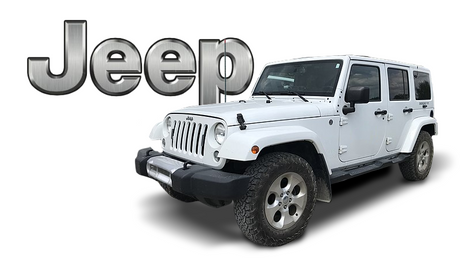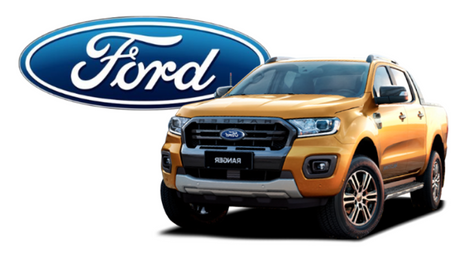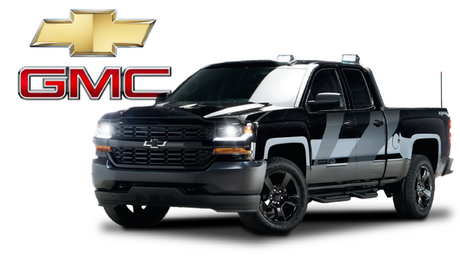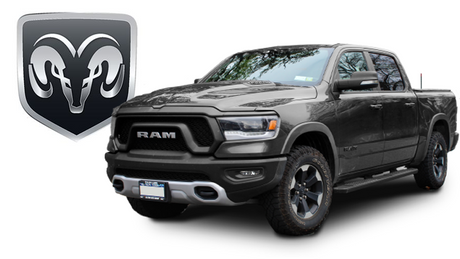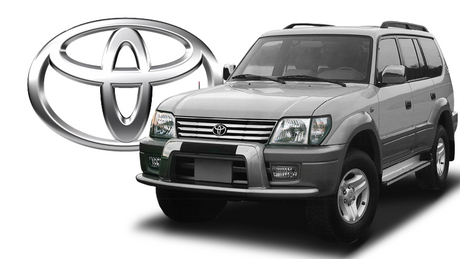How do I know which radio to buy?
What type of antenna should I choose for my vehicle?
What brand of antenna should I buy?
How do I know if my antenna is compatible with a specific mount?
Which CB radio will give me the best range?
What range can I expect from my CB?
Do CB radios include a speaker?
Where should I mount my antenna?
Why is antenna tuning important?
What equipment do I need to tune my antenna?
What is a tunable antenna tip and how does it work?
How does an antenna spring work?
What is the difference between an external speaker and a PA horn?
How do I get the cable from the antenna to the radio inside my vehicle?
How do a spring and a disconnect work? Do they work together?
I can't tune my antenna properly and have high SWR! What's wrong?
I don't want to drill holes in my vehicle. Can I still mount an antenna?
What is a no-ground plane (NGP) antenna?
How do I know if I need an NGP antenna?
Do I need to tune an NGP antenna?
Does Right Channel Radios work on and/or repair CB radios?
Does Right Channel Radios have a print catalog?
Which CB frequencies and channels do I use?
How do I know which radio to buy?
All CB radios have the same transmission power, so choosing a radio really comes down to deciding which features are important. We've written a guide specifically dedicated to radio selection called Choosing a CB Radio.
What type of antenna should I choose for my vehicle?
There are a large number of considerations that go into antenna selection, and we've dedicated an entire article to this topic (see Choosing a CB Antenna). If you’re not inclined to read this article, we've listed a number of vehicles and the most commonly used antennas below:
- Cars: Magnet roof or trunk antennas
- Pick-up Trucks: Fiberglass top-loaded antennas
- Semi Trucks: Fiberglass top-loaded antennas and center-loaded steel whip antennas
- RVs & Motor Homes: No-ground plane (NGP) top-loaded fiberglass antenna
What brand of antenna should I buy?
There are a number of quality antenna manufactures. While this by no means represents a comprehensive list of quality manufacturers, we are very comfortable recommending antennas from Firestik, Wilson and K40 to our customers.
How do I know if my antenna is compatible with a specific mount?
Nearly all antennas utilize a standard 3/8” x 24 connecting thread, which is supported by 99% of the available antenna mounts. Despite this near-universal compatibility, it’s important to make sure your mount will be sturdy enough to support your antenna. Though a small roof magnet mount would be well-suited for a short 2’ fiberglass antenna, it would be a poor choice for a heavy center-loaded 5’ antenna, as the momentum of the antenna during driving would most likely cause the magnet mount to come off. When choosing a mount, it's important to consider the stress an antenna will cause.
Which CB radio will give me the best range?
All stock CB radios are limited by FCC regulations to 4 watts of transmission power. Accordingly, all radios will have the same output power regardless of their price. As all radios are limited by this bottleneck, the largest determinant of performance is antenna quality and installation. We've written an entire article that discusses antenna and mounting location selection, which addresses important factors for getting the best performance possible from your CB system. This article is titled Choosing a CB Antenna.
What range can I expect from my CB?
CB transmission range is dependent upon a number of factors and can vary based on the surrounding terrain, antenna length, antenna quality, installation and the status of the ionosphere. Typically, CB range tends to average between 3 and 6 miles, with a upper range of 10 miles but as previously stated can deviate substantially based on conditions.
Do CB radios include a speaker?
All CB radios include a speaker so that incoming signals can be heard. However, the speaker location can vary. While the most common location is on the bottom surface of the radio, speakers are also found on the front of the radio on some models. Additionally, nearly all CBs also support external speakers if you’d like to use a more powerful speaker with your CB.
If you're buying a CB for occasional or recreational use, our aftermarket peak and tune option really isn't necessary. A normal (i.e. non-tuned) CB with a properly installed antenna will provide satisfactory performance for most people. If you're on a budget and trying to get the best performance possible, we'd recommend spending your money on a quality antenna instead of a radio peak and tune. However, if you spend significant time on your CB or just want the best, a peak and tune will certainly enhance your radio's performance.
Where should I mount my antenna?
Choosing where to mount your antenna is often the hardest and most time consuming decision you’ll make concerning a new CB purchase. Our guide on antenna selection contains a detailed section on mounting considerations. This article is titled Choosing a CB Antenna.
What is “antenna tuning”?
CB antennas use the metallic ground plane of the vehicle in order to transmit their signal. The ground plane and its radiating effect will vary based upon where and how you install your antenna on the vehicle, as well as upon the shape and construction of your vehicle’s chassis. The tuning process refers to changing the length of your antenna in order for your antenna to work most efficiently based on the unique ground plane factors of your vehicle. There are a number of articles that cover antenna tuning in our Learning Center Section.
Why is antenna tuning important?
You may have never heard of the tuning process, or perhaps you've installed antennas without tuning them. While antenna tuning isn't required to operate your CB system, there are a number of important reasons you should always tune an antenna:
- Improved Performance - A properly tuned antenna will ALWAYS work more efficiently than an untuned antenna. In order to get the best range and performance out of your CB, it’s important to tune your antenna.
- Protects your Radio - An untuned antenna has the potential to permanently damage the components of your CB radio. An untuned antenna can reflect your transmission signal back to your radio as heat, which can damage your radio’s electronic components. For more details, see the next question, "What is SWR?"
What is SWR?
SWR stands for Standing Wave Ratio. SWR is a measure of how efficiently your antenna transmits a radio’s signal and is expressed as a ratio. For example, a SWR ratio of 1:1 means that your antenna is perfectly transmitting 100% of your radio’s signal while a ratio of 3:1 means that only one-third of the radio’s signal is being transmitted by the antenna.
When radio signals aren’t transmitted by the antenna, they can be transfered back to the radio as heat, which can damage the radio’s electronic components. A rule of thumb is that SWR levels below 2.0 are acceptable for operation while levels above 3.0 indicate problems that needs addressing. For more information on measuring SWR and troubleshooting SWR problems, please visit the Learning Center Section.
What equipment do I need to tune my antenna?
In order to tune your antenna you’ll need a SWR meter and a short jumper cable. A basic meter and jumper are fairly inexpensive and can be purchased for less than $20. The meter is attached between your radio and antenna in order to measure SWR levels.
What is a tunable antenna tip and how does it work?
A tunable tip is usually a screw at the end of the antenna that allows the antennas height to be easily changed for tuning. Antennas without this feature often need to be physically cut in order to tune properly and are often more difficult to tune.
How does an antenna spring work?
An antenna spring is simply a spring that is installed between the antenna and the mounting device. It allows the antenna additional freedom of movement and protects both the antenna and mount from being damaged if caught on an overhang object. Antenna springs have a female end where the antenna screws into and a male end that screws into the antenna stud on the mounting surface.
What is the difference between a external speaker and a PA horn?
External speakers broadcast incoming CB signals and are usually mounted inside the vehicle’s cab. PA (Public Address) horns, used with compatible CB radios, are mounted to the exterior of the vehicle and allow the operator to broadcast their voice to those outside the vehicle using the CB microphone.
How do I get the cable from the antenna to the radio inside my vehicle?
There are a number of options for routing your cable inside your vehicle. The door frame on many vehicles is a good option as the gap between the door and vehicle is sealed with a soft rubber gasket. If you have ample clearance, and the closed door doesn’t crimp your coax, this can be an excellent option. Other options include bringing the coax in through a window, through the roof or through the firewall and dashboard of your vehicle.
How does a spring and a disconnect work? Do they work together?
A spring installs between the mount and antenna and provides flexibility in the event that the antenna is hit or jarred. A disconnect also installs between the mount and antenna and allows the antenna to be quickly removed without the use of tools.
Springs and disconnects are installed the same way. Each has male threads on the bottom which screw into the stud on the mounting surface. The top surface of each has female threads into which the antenna screws. Due to their similar designs, CB springs and disconnects can both be used in the same installation, stacked right on top of one another.
I can’t tune my antenna properly and have high SWR! What’s wrong?
A number of factors can cause high SWR, including a shorted cable connection, improper antenna tuning/length and a poor ground. For articles that discuss troubleshooting high SWR levels, please see the Learning Center Section.
I don’t want to drill holes in my vehicle. Can I still mount an antenna?
You might be relieved to learn that several mounting options don’t require drilling, such as magnet mounts, trunk-lip mounts and mirror bar mounts.
What is a No-Ground Plane (NGP) Antenna?
A CB antenna utilizes the metal chassis of a vehicle for transmitting. Without a good ground plane, an antenna will provide poor, if any, performance. No-ground plane (NGP) antennas have the required counterpoised built in to the coax cable and can be used on vehicles that lack a sufficient ground or metal chassis.
As special modifications are required for NGP equipment, NGP antennas come in kits that include modified NGP coax. NGP antennas and coax are not interchangeable with regular grounded antenna equipment and are almost always purchased together. Ground-plane antennas tend to have a 15% to 20% stronger field strength than similar NGP antennas. Subsequently, it’s always preferable to use a traditional antenna if a good ground plane is available.
How do I know if I need a NGP Antenna?
If you’re installing a CB antenna on an RV, boat, or other vehicle that lacks a good metal chassis, you’ll most likely need an NGP antenna.
Do I need to tune a NGP Antenna?
NGP antennas need to be tuned just like ground-plane antennas to ensure optimal performance and to check for high SWR levels.
Does Right Channel Radios work on and/or repair CB radios?
We currently do no offer radio repair services.
Does Right Channel Radios have a print catalog?
We currently do not at this time. However, we offer a large selection of radios, antennas and accessories on our online shop.
Which CB frequencies and channels do I use?
The CB Radio spectrum is broken up into 40 channels with CB frequencies ranging from 26.965 to 27.405 MHz. Channels are generally spaced 10 MHz apart. While these channels are open to everyone, some have commonly agreed upon purposes. Visit CB Radio Frequencies and Channels for more information.


